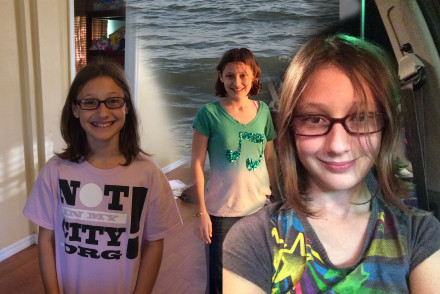A Look at the Tension Between Selfless Love and Healthy Boundaries.
What would you say to the young couple, recently married, with a 6-month old baby who wants to foster a sibling group of five children, ranging in ages between 8 and 17? How do you hold well the tension between selfless love and healthy boundaries?
Jesus says, ‘Don’t resist the one who is evil. If he takes your tunic, give him your cloak. If someone forces you to go one mile, go two.’

You can do this for one…not everyone.
You only have so many cloaks. You can only walk so far.
So how do you determine when to say ‘yes’ and ‘no’ to endless opportunities to demonstrate selfless love?
Jesus’ Sermon on the Mount in Matthew 5-7 and his example and teaching in John 13 make it clear: We are to love people as Jesus loves people, which isn’t based on how we feel or what they deserve. It goes two miles in joy when you’d expect one out of resentment and obligation. It washes the feet of the one committing the deepest betrayal. It’s nothing of this world. Love, by its very nature, expands the personal boundaries we’re naturally disposed to put up. But it doesn’t eviscerate them…and it’s this tension between love and boundaries I’d like us to look at.
“Truth and love help us manage our ‘yeses’ and ‘nos.’”

The very same boundaries can be established out of self-absorption or a clear sense of purpose.
The very same openness to radical hospitality can come from deep deficits or deep love. Such yeses and nos can look the same on the outside, but it’s important to distinguish between them.
How?
Conversations on boundaries look different depending on the health of one’s will-to what degree do I own my yeses and nos? If my will has atrophied and my yeses and nos are co-opted, conversations about boundaries become skewed. The real need isn’t primarily to relocate a fence, it’s to strengthen the soil the fence rests on.
Here are a couple other questions that might be helpful-
Is it a pull or a push?
Do you feel drawn or is it just the FOG (fear, obligation, and guilt) setting in? When we became foster parents, Bonnie was the dragger and I was the draggee. It’s not an uncommon scenario, where the question of pull or push is a bit complex. My hesitations weren’t legitimate red flags; I had placed a boundary at my front door and said, ‘Ministry happens out there,’ ‘Peace is in here.’ I’m really thankful for how we worked through the initial ‘yes.’ A ‘push’ might not always be a warning sign, but it’s good to examine the source of motivation.
Is it life giving or life stealing?
Energy level is a different category of resource compared to time and money. When you are in your element and doing what you’re called and gifted to do, the experience isn’t as draining as it might look from the outside. A friend who works with Syrian refugees in our city carries a schedule that friends say, “You’re doing too much and you need to scale back and take care of yourself.” She doesn’t feel the same about it. She’s an extrovert, enjoys being with people, and feels particularly drawn to the Syrian community in our city. Considering the impact of what we’re doing on our energy level and emotions might also be helpful when we’re assessing the place of healthy boundaries.
Embrace the Tension
It’s also helpful to think about how tension creates growth. There’s no growth without tension, but tension must be wisely calibrated. Somewhere between atrophy and being torn apart is a good stretching. Peter Senge, in his book, The Fifth Discipline, describes healthy tension with this metaphor: imagine you’re holding your hands together, one on top of the other, and you place small rubber bands around each set of fingers. As you pull your hands apart, you begin to feel the tension. There’s no tension at a place of rest. But if you quickly pull your hands apart and rip off the rubber bands, you no longer have tension either.
Starting small, exercising wisdom based on trustworthy counsel, including the feedback of those who know us well, a consideration of best practices, and slowly building on best practices are effective ways to allow love to expand our boundaries without eviscerating them. We always want to leave room for God to transcend common wisdom, but it’s certainly a helpful reference point.











